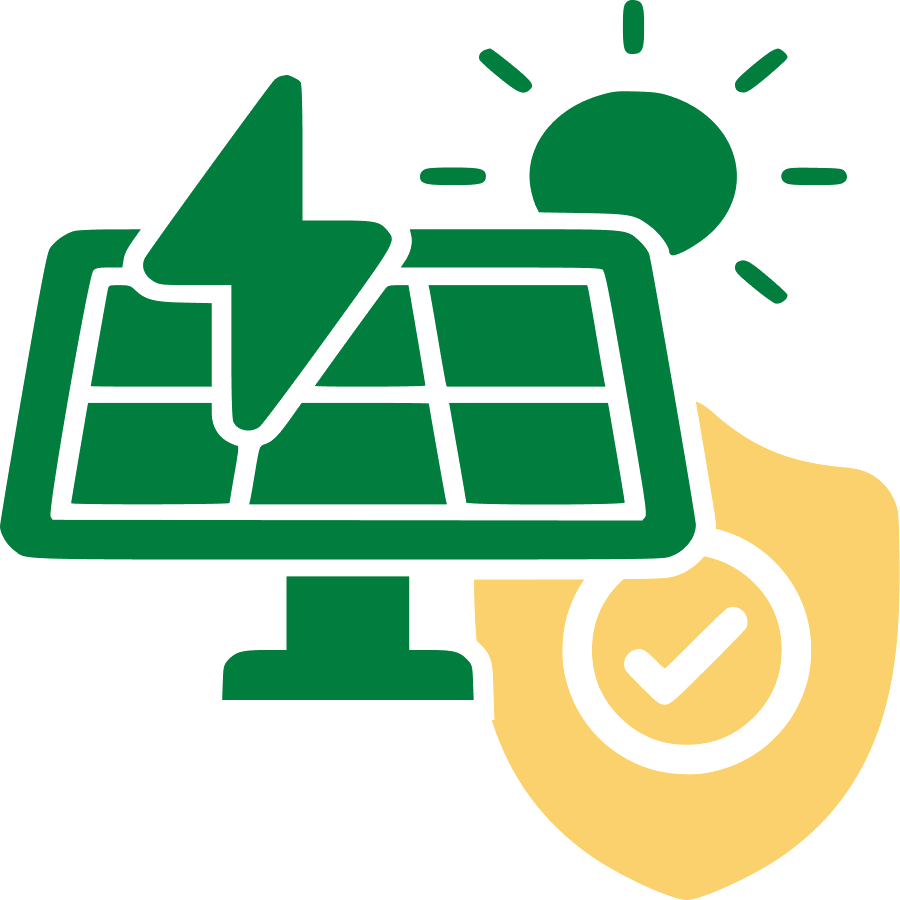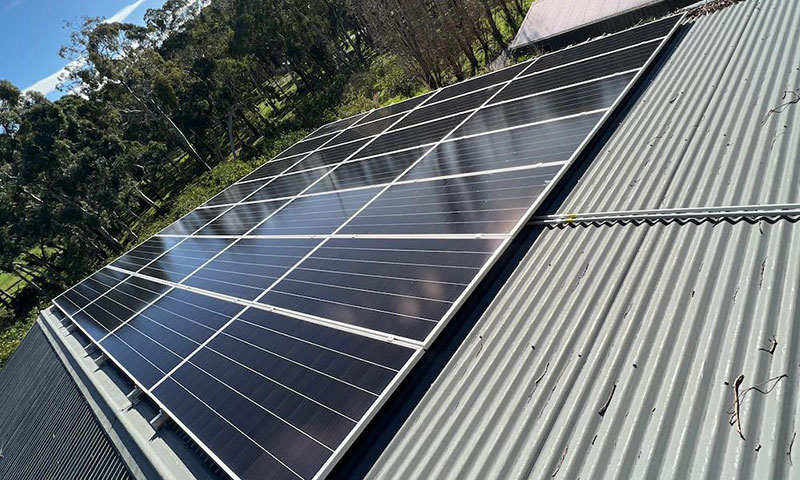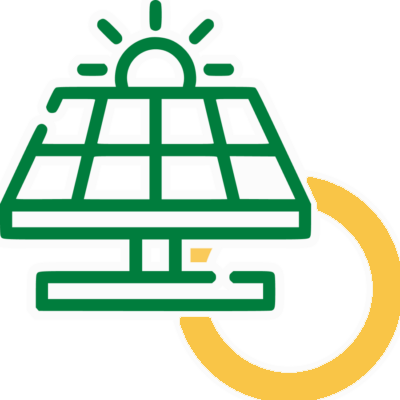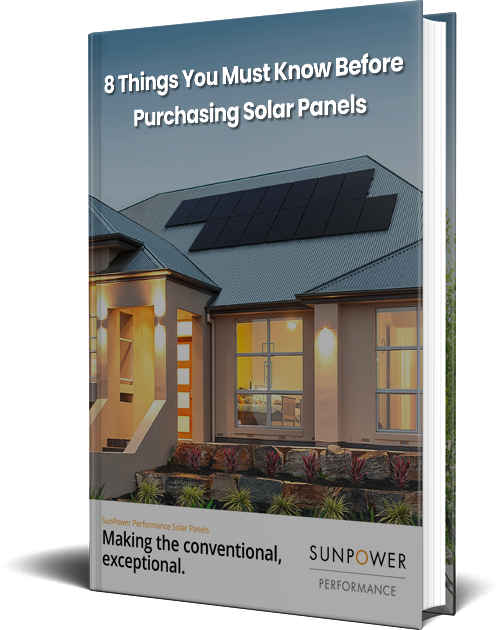
40 Year Warranty
We are Sunpower’s preferred installer, renowned for their industry-leading efficiency.

Guaranteed No Slavery Panels
Ethically and responsibly sourced supply chain.

Turbocharged Solar
Greater solar savings with Energy Buster is smarter approach.
Solar Systems
Maximise your total energy production with a powerful 100kW solar system.
Designed to maximise energy production and reduce your carbon footprint, our solar systems offer exceptional performance and long-term savings.
Harnessing the abundant sunlight in South Australia, our state-of-the-art solar panels and inverters ensure reliable and efficient operation. With a 100kW capacity, these systems are perfect for commercial and large-scale applications, providing substantial electricity generation for businesses, schools, and community organisations.
Take control of your energy consumption and contribute to a greener future. Contact us today to learn more about our solar solutions and start harnessing the sun’s energy for your power needs.

What are the best types of 100kW solar systems?
There are several types that are considered among the best:
Monocrystalline Panels: These panels are known for their high efficiency and sleek appearance. They are made from a single crystal structure, allowing them to convert sunlight into electricity effectively.
Polycrystalline Panels: These panels are cost-effective and offer good efficiency. They are made from multiple silicon crystals, providing a slightly lower efficiency compared to monocrystalline panels but at a more affordable price point.
Thin-Film Panels: Thin-film panels are lightweight and flexible, making them suitable for certain installations. They have lower efficiency compared to crystalline panels but can perform better in low-light conditions.
Hybrid Solar Systems: These systems combine the benefits of solar panels with energy storage solutions, such as batteries. They allow you to store excess electricity generated during the day for use during the night or when demand is high.
Grid-Connected Systems: These systems are connected to the electrical grid, allowing you to feed excess electricity back into the grid and receive credits or compensation for the energy you generate.
How much does a 100kW solar system cost?
The cost of a 100kW solar system in Adelaide can vary depending on several factors. These factors include:
- Type and quality of solar panels
- Brand of inverters used
- Complexity of the installation
- Any additional components or services required
As an average, the cost in Adelaide typically ranges from $90,000 to $140,000.
However, it’s important to note that prices may fluctuate due to various market factors, including supply and demand dynamics, advancements in technology, and government incentives.
To get an accurate and up-to-date cost estimate, get in touch with a member of the Energy Buster team for a customised quote based on your specific needs and project requirements.
100kW solar system benefits
✔ Cost Savings: Generating your own electricity with solar power can significantly reduce your energy bills. With a 100kW system, you can produce a substantial amount of electricity, offsetting a significant portion of your energy consumption and potentially leading to significant cost savings over the system’s lifespan.
✔ Environmental Impact: Solar energy is a clean and renewable source of power, reducing reliance on fossil fuels and minimising greenhouse gas emissions. By installing a solar system, you can contribute to a cleaner environment and help combat climate change.
✔ Return on Investment: Investing in solar power can provide attractive returns. The electricity generated by your 100kW system can result in long-term savings on energy bills, potentially leading to a return on investment over the system’s lifespan.
✔ Government Incentives: Incentive programs such as solar rebates, tax credits, and feed-in tariffs may be available, depending on your location. These incentives can further reduce the upfront cost, making it a more financially viable option.
✔ Energy Independence: Generating your own solar power provides a level of energy independence. With a 100kW system, you can significantly reduce dependence on the grid, especially during daylight hours when solar production is at its peak.
✔ Durability and Longevity: They are designed to withstand various weather conditions and can last for several decades with proper maintenance. Investing in a quality solar system can provide reliable electricity generation for many years.
✔ Positive Brand Image: Embracing solar energy demonstrates a commitment to sustainability and environmental responsibility. This can enhance the reputation of businesses, organisations, and institutions in Adelaide, attracting environmentally conscious customers and stakeholders.
What is the installation process for 100kW solar systems?
The installation process typically involves the following steps:
Step One: Consultation and Site Assessment
A reputable solar installer will conduct a consultation to understand your energy needs, assess your site’s suitability for solar, and gather relevant information such as roof space, orientation, shading, and electrical infrastructure.
Step Two: System Design
Based on the site assessment, the installer will design a custom system that meets your energy requirements and maximises solar generation. This includes determining the optimal placement and configuration of solar panels, inverters, and any additional components.
Step Three: Permits and Approvals
The installer will handle the necessary permits and approvals required for the installation, such as grid connection and building permits. This ensures compliance with local regulations and standards.
Step Four: Procurement and Delivery
The installer will procure the solar panels, inverters, mounting systems, and other required equipment. They will coordinate the delivery of these components to your site.
Step Five: Installation
A team of qualified technicians will install the panels and other components according to the system design. This involves mounting the panels on the roof or ground-mounted structures, installing the inverters and wiring, and connecting the system to the electrical infrastructure.
Step Six: Electrical Connections and Commissioning
The installers will make the necessary electrical connections, including integrating the system with the electrical panel and grid connection point. They will perform tests and inspections to ensure the system is functioning optimally and safely.
Step Seven: Monitoring and Maintenance
Once the system is commissioned, you can monitor its performance using monitoring tools provided by the installer. Regular maintenance, such as cleaning the panels and checking for any issues, is recommended to ensure optimal performance and longevity.

 40 Year Warranty
40 Year Warranty











































